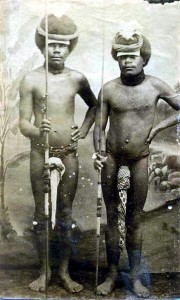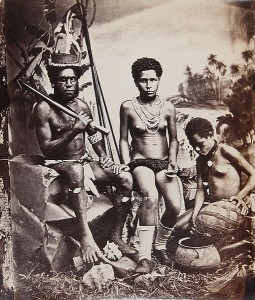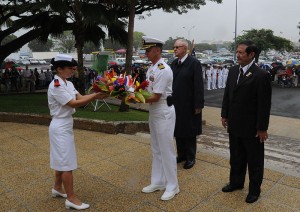New Caledonia
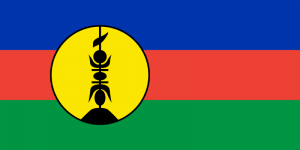
New Caledonia
New Caledonia is an outstanding destination, due largely to the magnificent barrier reef which surrounds the main island of Grande Terre. It is the second largest in the world and is, unsurprisingly, an underwater maze of natural beauty. But the islands themselves are more than capable of entertaining the holidayer. Luxurious five star hotels invite the wealthy tourists into their midst, whilst the budget traveller can lodge in the cheaper accomodation. But be they wealthy or on a budget, everyone who comes to New Caledonia is treated to the same cultural vivacity and tropical flavour. Frenchness has made its mark on culture, but the islanders are by no means a collection of French folk donning swimsuits and suntans; their dance and food are unmistakably traditional, though infused with modern influences. Since 1986 the United Nations Committee on Decolonization has included New Caledonia on the United Nations list of Non-Self-Governing Territories. New Caledonia will decide whether to remain within the French Republic or become an independent state in a referendum sometime after 2014. bbtv broadbandtv powersports powerdocs new caledonia france cities city world nature travel tour tourism history ancient discovery destinations landmark culture civilization building structure background adventure.
Flags of New Caledonia
New Caledonia (French: Nouvelle-Calédonie) is a special collectivity of Francelocated in the southwest Pacific Ocean, 1,210 kilometres (750 mi) east of Australiaand 16,136 kilometres (10,026 mi) east of Metropolitan France. The archipelago, part of the Melanesia subregion, includes the main island of Grande Terre, the Loyalty Islands, the Chesterfield Islands, the Belep archipelago, the Isle of Pines and a few remote islets. The Chesterfield Islands are in the Coral Sea. Locals refer to Grande Terre as “Le Caillou” (“the stone”). New Caledonia has a land area of 18,576 square kilometres (7,172 sq mi). The population (Jan. 2012 estimate) is 256,000. The population is a mix of Kanak people (the original inhabitants of New Caledonia), White European people (Caldoches andMetropolitan Frenchmen), Polynesian people (Wallisians essentially), and South-East Asian people. The capital of the territory is Nouméa.
History
The earliest traces of human presence in New Caledonia date back to the Lapita period. The Lapita were highly skilled navigators and agriculturists with influence over a large area of the Pacific.
Two Kanak warriors posing with penis gourds and spears, c.1880
The British first sighted New Caledonia on 4 September 1774, during the second voyage of Captain James Cook. He named the territory New Caledonia, as the north-east of the island reminded him of Scotland. The west coast of Grande Terre was approached by Jean-François de Galaup, comte de Lapérouse in 1788, shortly before his disappearance, and the Loyalty Islands were first visited in 1796. From then until 1840, only a few sporadic contacts with the archipelago were recorded. Contacts became more frequent after 1840, because of the interest in sandalwood from New Caledonia. As trade in sandalwood declined, it was replaced by a new form of trade, “Blackbirding,” a euphemism for enslaving people from New Caledonia, the Loyalty Islands, New Hebrides, New Guinea, and the Solomon Islands to work in sugar cane plantations in Fiji and Queensland.
The trade ceased at the start of the 20th century. The victims of this trade were called Kanakaslike all the Oceanian people, after the Hawaiian word for ‘man’. The first missionaries from the London Missionary Society and the Marist Brothers arrived in the 1840s. In 1849, the crew of the American ship Cutter was killed and eaten by the Pouma clan. Cannibalism was widespread throughout New Caledonia. On 24 September 1853, under orders from Napoleon III, Admiral Febvrier Despointes took formal possession of New Caledonia and Port-de-France (Nouméa) was founded 25 June 1854. A few dozen free settlers settled on the west coast in the following years. New Caledonia became a penal colony, and from the 1860’s until the end of the transportations in 1897, about 22,000 criminals and political prisoners were sent to New Caledonia, among them many Communards, including Henri de Rochefort andLouise Michel. Between 1873 and 1876, 4,200 political prisoners were “relegated” in New Caledonia. Only forty of them settled in the colony, the rest returned to France after being granted amnesty in 1879 and 1880.
Chief “King Jacques” and his Wives
In 1864 nickel was discovered on the banks of the Diahot River and with the establishment of the Société Le Nickel in 1876 mining began in earnest. The French imported labourers to work in the mines, first from neighbouring islands, then from Japan, the Dutch East Indies and French Indochina. The French government also attempted to encourage European immigration, without much success. The indigenous population was excluded from the French economy, even as workers in the mines, and they were ultimately confined to reservations. This sparked a violent reaction in 1878 as High Chief Atal of La Foa managed to unite many of the central tribes and launched a guerrilla war which cost 200 Frenchmen and 1,000 Kanaks their lives. The Europeans brought new diseases such as smallpox and measles.
Many people died as a result of these diseases. The Kanak population declined from around 60,000 in 1878 to 27,100 in 1921, and their numbers did not increase again until the 1930s. In June 1940, after the fall of France, the Conseil General of New Caledonia voted unanimously to support the Free French government, and in September the pro-Vichygovernor was forced to leave for Indochina. In March 1942, with the assistance of Australia, the territory became an important Allied base, and Nouméa the headquarters of the United States Navy Army in the South Pacific. The fleet which turned back the Japanese navy in the Battle of the Coral Sea in May 1942 was based at Noumea. American troops counted up to 50,000 men, the equivalent of the contemporary population. In 1946 New Caledonia became an overseas territory. By 1953 French citizenship had been granted to all New Caledonians, regardless of ethnicity.
The European and Polynesian populations gradually increased in the years leading to the nickel boom of 1969–72, and the Melanesians became a minority, though they were still the largest single ethnic group. Between 1976 and 1988, New Caledonia adopted five different statutes, with each proving to be a source of discontent and, at times, serious disorder, culminating in 1988 with a bloody hostage taking in Ouvéa. The Matignon Agreements, signed on 26 June 1988, ensured a decade of stability. The Noumea Accord signed 5 May 1998, set the groundwork for a 20-year transitional period that will gradually transfer competences to the local government.
Politics of New Caledonia 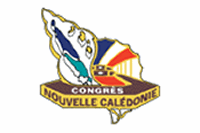 Logo of the Territorial Congress
Logo of the Territorial Congress
New Caledonia is a sui generis collectivity to which France has gradually transferred certain powers. It is governed by a 54-member Territorial Congress, a legislative body composed of members of three provincial assemblies. The French State is represented in the territory by a High Commissioner. At a national level, New Caledonia is represented in the French Parliament by two deputies and two senators. At the 2012 French presidential election the voter turnout in New Caledonia was 61.19%. For 25 years, the party system in New Caledonia was dominated by the anti-independence The Rally–UMP. This dominance ended with the emergence of a new party, Avenir Ensemble, also opposed to independence but considered more open to dialogue with the Kanak movement, which is part of FLNKS, a coalition of several pro-independence groups.
Customary Authority
The Kanak society has several layers of customary authority, from the 4,000-5,000 family-based clans to the eight customary areas (aires coutumières) that make up the territory. Clans are led by clan chiefs and constitute 341 tribes, each headed by a tribal chief. The tribes are further grouped into 57 customary chiefdoms (chefferies), each headed by a Head Chief, and forming the administrative subdivisions of the customary areas.
Jean Lèques during a ceremony honoring U.S. service members who helped ensure the freedom of New Caledonia during World War II.
The Customary Senate is the assembly of the various traditional councils of the Kanaks, and has jurisdiction over the law proposals concerning the Kanak identity. The Customary Senate is composed of sixteen members appointed by each traditional council, with two representatives per each customary area. In its advisory role, the Customary Senate must be consulted on law proposals “concerning the Kanak identity” as defined in the Noumea Accord. It also has a deliberative role on law proposals that would affect identity, the civil customary statute and the land system. A new President is appointed each year in August or September, and the presidency rotates between the eight customary areas. Kanak people have recourse to customary authorities regarding civil matters such as marriage, adoption, inheritance, and some land issues. The French administration typically respects decisions made in the customary system. However, their jurisdiction is sharply limited in penal matters, as some matters relating to the customary justice system, including the use of corporal punishment, are seen as clashing with the human rights obligations of France.
Military
The Armed Forces of New Caledonia (French: Forces armées de Nouvelle-Calédonie) include about 2,000 soldiers, mainly deployed in Koumac, Nandi, Tontouta, Plum and Noumea. The land forces consist of a regiment of the Troupes de marine, the Régiment d’infanterie de marine du Pacifique. The naval forces include two P400 class patrol vessels, a BATRAL and a patrol boat of the Maritime Gendarmerie. The air force is made up of three Casa transport aircraft, four Puma helicopters and a Fennec helicopter, based in Tontouta. In addition, 760 gendarmes are deployed on the archipelago.
Status
Since 1986 the United Nations Committee on Decolonization has included New Caledonia on the United Nations list of Non-Self-Governing Territories. An independence referendum was held the following year, but was rejected by a large majority. Under the Noumea Accord, signed in 1998 following a period of secessionist unrest in the 1980’s and approved in a referendum, New Caledonia is to hold a second referendum on independence between 2014 and 2018. The official name of the territory, Nouvelle-Calédonie, could be changed in the near future due to the accord, which stated that “a name, a flag, an anthem, a motto, and the design of banknotes will have to be sought by all parties together, to express the Kanak identity and the future shared by all parties.” To date, however, there has been no consensus on a new name for the territory. New Caledonia has increasingly adopted its own symbols, choosing an anthem, a motto, and a new design for its banknotes. In July 2010, New Caledonia adopted the Kanak flag, alongside the existing French tricolor, as a proposal to become the dual official flags of the territory.
The adoption made New Caledonia one of the few countries or territories in the world with two official national flags. The decision to use two flags has been a constant battleground between the two sides and led the coalition government to collapse in February 2011.


